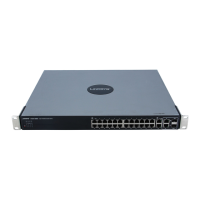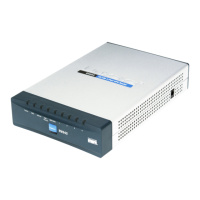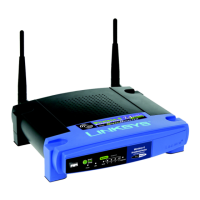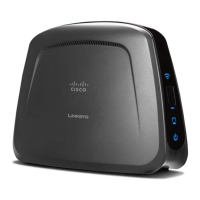27
Chapter 3: Connecting the Switch
Stack Troubleshooting and Maintenance
Linksys One Ready Communications Solution
Chapter
3
assigned the same Unit ID of the unit it replaced, then when possible, it receives the
same configuration as the failed unit.
• If the incoming unit is identical to the replaced unit, the entire configuration of the
replaced unit is applied to the incoming unit and the stack returns to the state it was
in before unit failure.
Splitting a Stack
A working stack can be split into two groups, either by failure of a stacking link connecting
two units in the stack, or by a failed unit in a chain topology that causes disconnection
between two units in the stack. In this case, each group is considered as an independent
running stack configuration. For each group, there are three scenarios.
The Stack Master and Backup Master Units Remain in a Group
In this scenario, the Stack Master routes around the missing units. The Master Discovery,
Master Election and Unit ID Allocation & Duplicate Unit ID Conflict Resolution processes
occur with the following results:
• Any configuration information contained in the Stack Master that is relevant to the units
which remained in the split group remains unchanged.
• Topology information (the information for each unit on how to send traffic to any other
unit in the stack) managed by the Stack Master includes only units that are reachable
(connected) following the split.
• The split stack continues to work as it previously did, but with fewer units.
- No unit ID changes are performed in each of the split stacks.
- The Stack Master notifies the system administrator of the removed units and ports
that belong to the unreachable units by sending SYSLOG messages and SNMP
traps. They are reported as “not present.”
The Stack Master or the Backup Master Unit Remains in a Group
If the Stack Master unit remains in the group, the scenario described in “Replacing a Failed
Member Stack Unit in an Operational Stack” applies. If the Backup Master unit remains in

